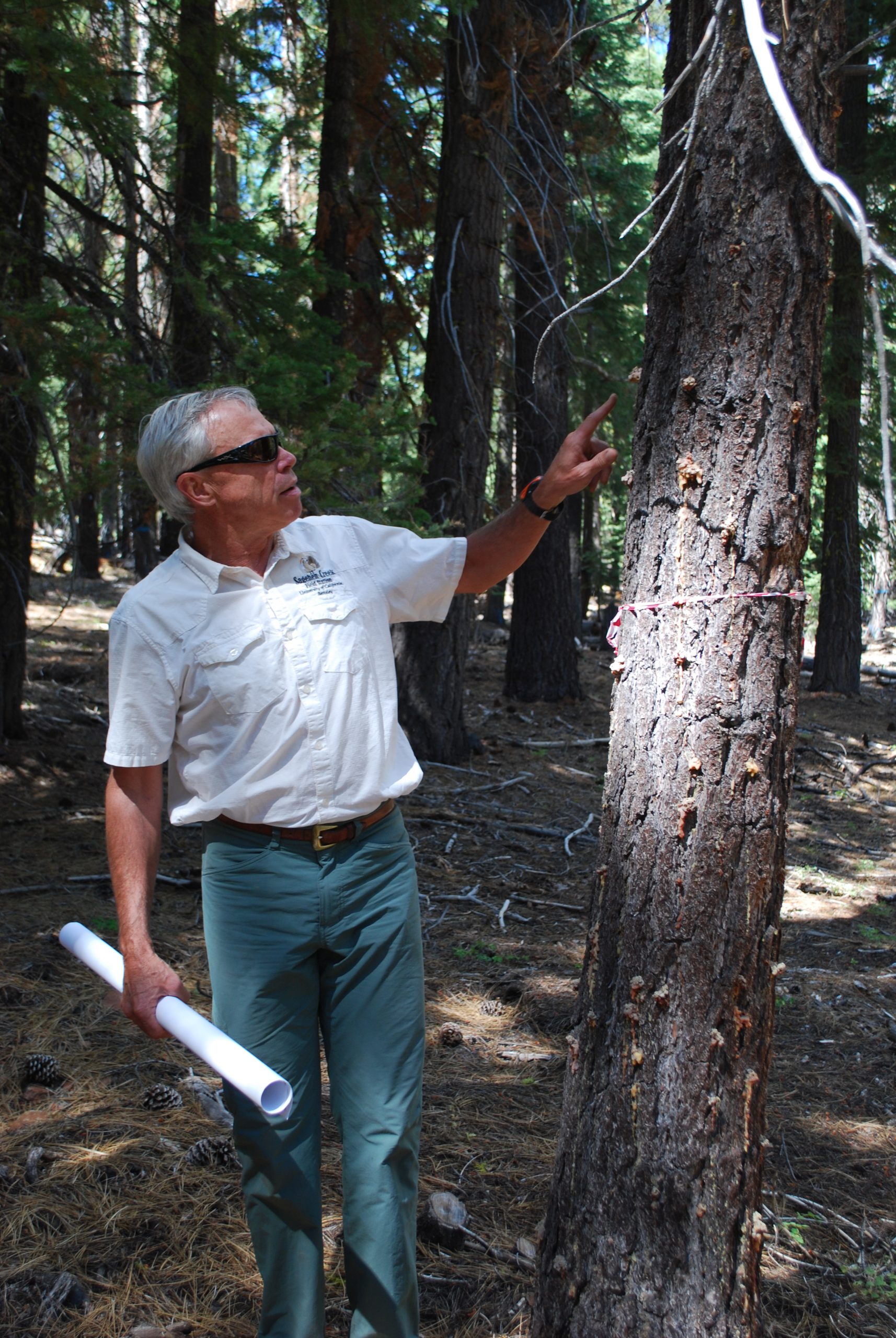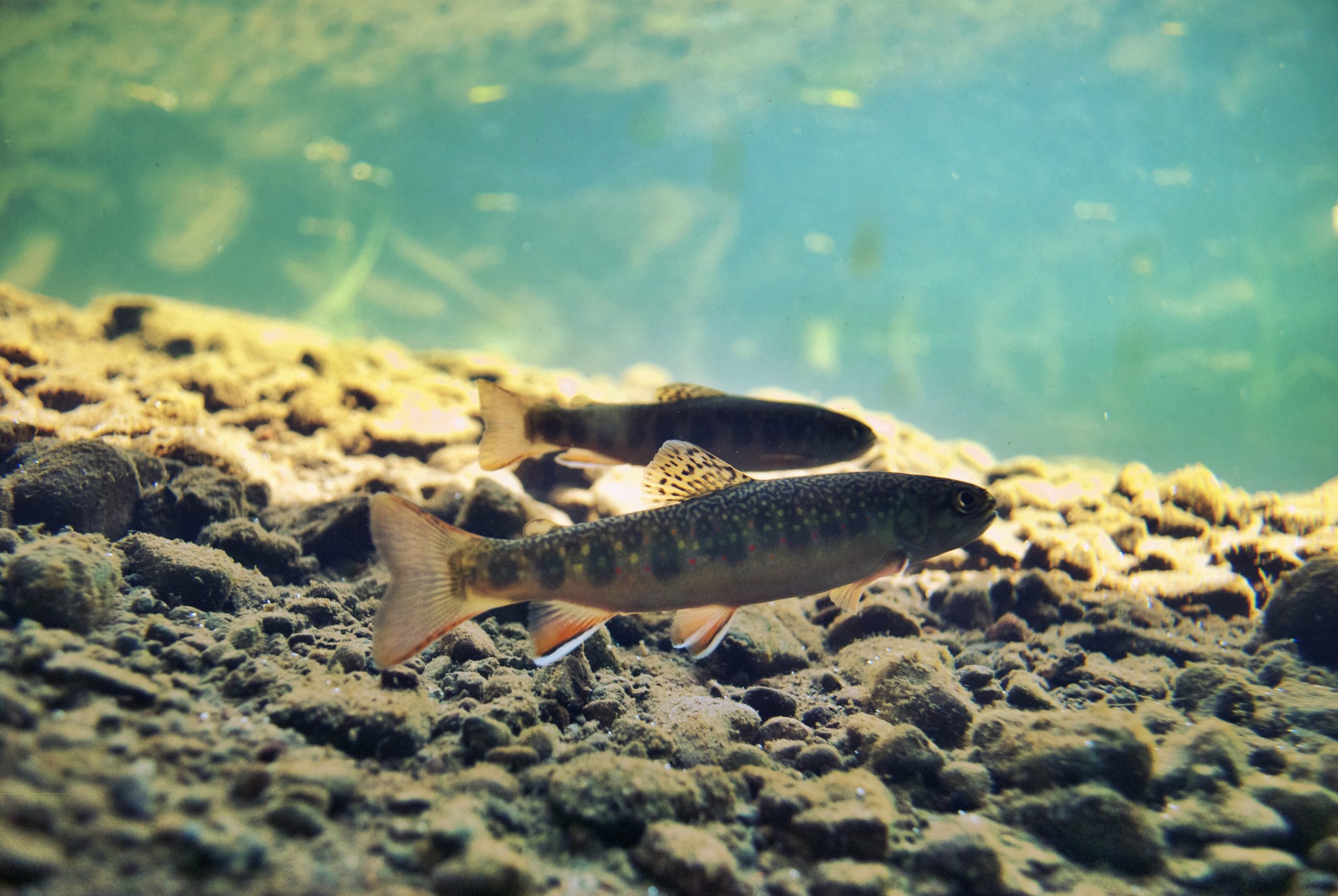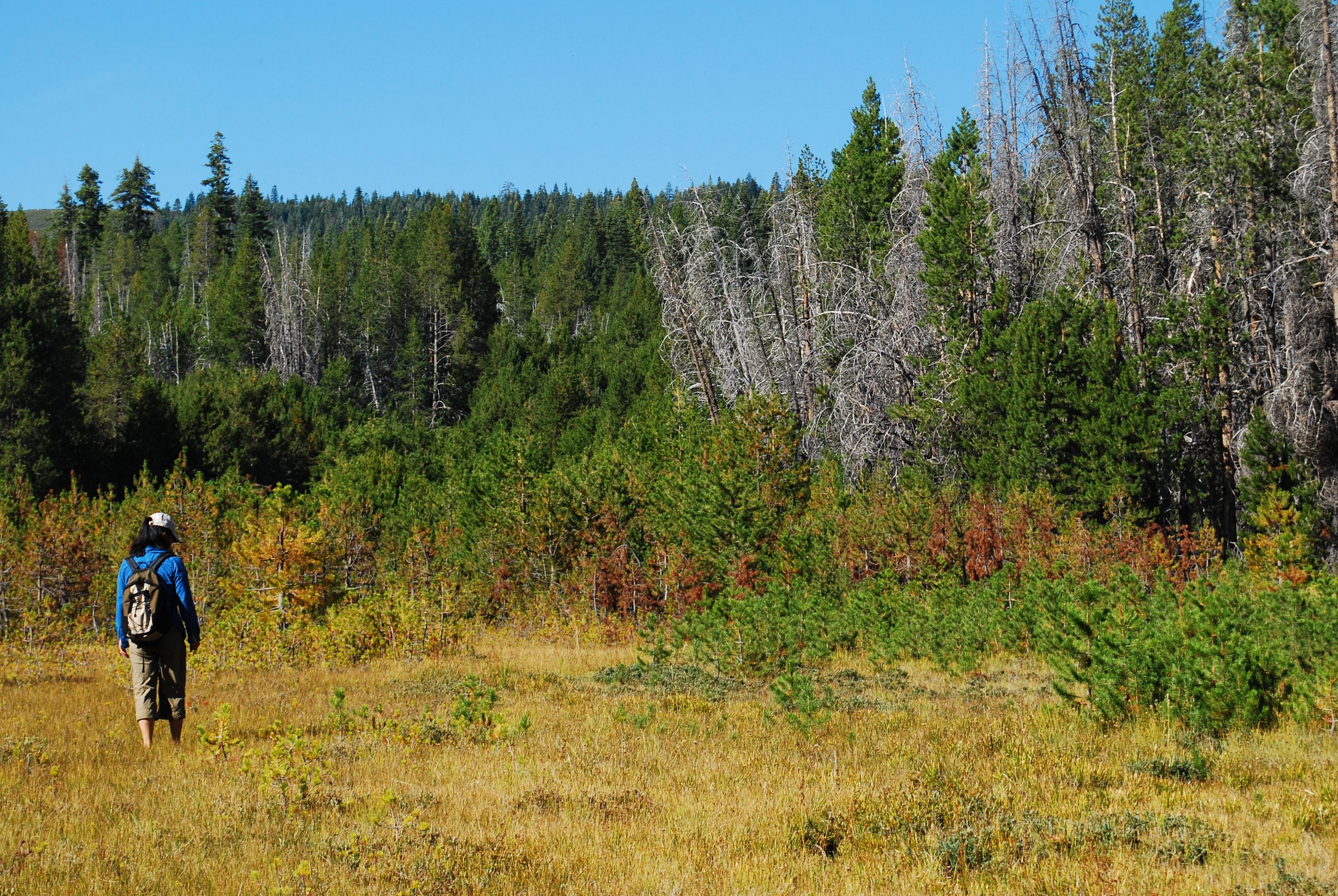Cutthroat Trout and Carnivorous Plants: Exploring Sagehen Creek Field Station
It is peculiar to stand eight feet underground in a forest, watching as three trout swim by in lazy loops. This is the view from inside the Fish House at Sagehen Creek Field Station northwest of Lake Tahoe. Sagehen (“Sage-hen”) is a UC Berkeley satellite research center, and I recently joined a group of science writers for a weekend to learn about Sagehen’s latest projects. This is a small story of water, wildfires, and wildland management — for better or worse.

Our stay began with a talk by our host, Sagehen station master, Jeff Brown. A former ski patrolman, Jeff navigates Sagehen Forest wearing sturdy flip flops and a wide smile reminiscent of Dick Van Dyke. He reported ongoing Sagehen projects that include everything from a 5-week Davis Bug Boot Camp for grad students (page 11), to LIDAR calculations of Sagehen’s topography and tree densities, to Sagehen’s new fire management techniques using SPLATs, to the 50-year, $2 million Harrison project for the Nevada Museum of Art, to describing the fen (an alkaline bog) not far from the Fish House that is home to carnivorous plants called sundews.
The Fish House itself was built by grad students a few years back to observe the creek. Subterranean stream spying is a great way to spend part of a Saturday afternoon, but I usually study the brain and behavior. The closest I’ve been to fish in academia was learning that sharks detect fish mostly by electrical pulses, not scent (sharks will go for an electrode over a bloody-scented fish dummy any day). However, I believe a properly balanced scientist ought to be a geek of all trades, so while I stood eye-to-eye with a Lahontan cutthroat trout, I recalled what Jeff had taught us about the fish.

Lahontan cutthroats are versatile creatures. The fish can withstand spikes in temperature and drops in acidity when more dominant species, like brook, brown, and rainbow trout, cannot. Resilient it may be, but the Lahontan cutthroat is a threatened species. Just over the hill from Sagehen lies Independence Lake, the trout’s only remaining native habitat. Curiously, we can link a recent population spike to Steve Jobs. The late Apple tycoon was due to buy Independence Lake in 2002, but after the deal collapsed, the Nature Conservancy snatched the land, clearing the way for population recovery. With periodic removal of brook trout, the number of Lahontan cutthroat spawners has jumped from 30 to 225.
The Lahontan Cutthroat trout story is a positive example of human ecological intervention. Unfortunately, not all stories are as successful. One needs only look at the Rim Fire sweeping the Californian Sierra near Yosemite to see how forest management can at times be clumsy. The same region burned in 1987, and Jeff told us that in the aftermath, Boy Scouts earned $0.25 for every pine tree they planted in the devastated area. One ought never underestimate boyish enthusiasm for such things. The result was an unnaturally dense and uniform forest, which is now, as LA Times author, Bettina Boxal, put it, “perfect wildfire fuel.”

Nowadays, aggressive fire suppression leads to forests well overdue to burn. Post-European burns shifted to 25-year intervals with heats so intense, they will kill organisms five feet underground. A fire like that can easily burn out of control, like the Rim Fire, now California’s 5th largest on record.
Granted, most of us can agree that uncontrolled, 50-foot flame wildfires are terrifying. I grew up in the foothills of the Sierras, just outside Chico, CA, where fire is a perennial threat. Nevertheless, a forest needs flame. Over time, pine needles and other material collects on the forest floor, forming “duff”. Normally, fires clear duff and creates natural pockets for rainwater and snowmelt to collect, recharging the groundwater supply. But disrupt this natural cycle, and the pine needles will form a resin-thick layer below the soil’s surface that is impermeable to water. Instead of draining through the soil to refill natural reserves, snowmelt and rain hits this resin layer, and skips off it like saran wrap. The result is massive flooding during winter and depleted water reserves.

How much flooding? On an average summer day, Sagehen Creek flows at 1.3 cubic feet per second (cfs). That’s about 9 gallons, or just under a third of a standard bathtub. While I concentrated on photographing trout in the Fish House (the watery yellow light makes everything look like it’s made of green olives), the creek could have filled about 22 bathtubs in a minute. Jeff then painted a picture of winter a few years ago. Heavy rains melted snow prematurely, saturating the soil. With the duff preventing proper drainage, Sagehen Creek swelled to an unrecognizable torrent, rushing by at 1,200 cfs. When Jeff cited that number to our group, eyebrows lifted, and I spotted a few dangling mandibles. This rain-on-snow event could have filled 22,440 bathtubs in a minute.

Floods aside, a bigger concern is inconsistent water supply. “Snow is the drip irrigation system of California,” Jeff said at the close of his talk. Satellite images show Sagehen’s snowpack shrinking every year. Less snow means earlier dry seasons, warmer streams, and dehydrated landscapes. At Sagehen, the difference between winter snow that will accumulate, and rain that the creeks will whisk away, is a chillingly slight 1.5 degrees Celsius. The station tapwater seeped into Sagehen soil 40 years ago. Jeff playfully describes it as “Sagehen private estate artesian water,” but one has to wonder if the supply will be so robust 40 years from now.
The work at Sagehen helps us understand the broader consequences of human involvement within an ecosystem. I have new admiration for the complexities involved, and I expect improvements in wildland management will stem from this research. Hopefully next time I visit Sagehen, I’ll spot one of the infamous flying squirrels!

Jahlela is a senior undergraduate student studying cognitive neuroscience and music at the University of California, Berkeley. She is an avid photographer, sings constantly, and loves all things science. Follow her on twitter @jahlela or tumblr.
jahlela AT berkeley.edu